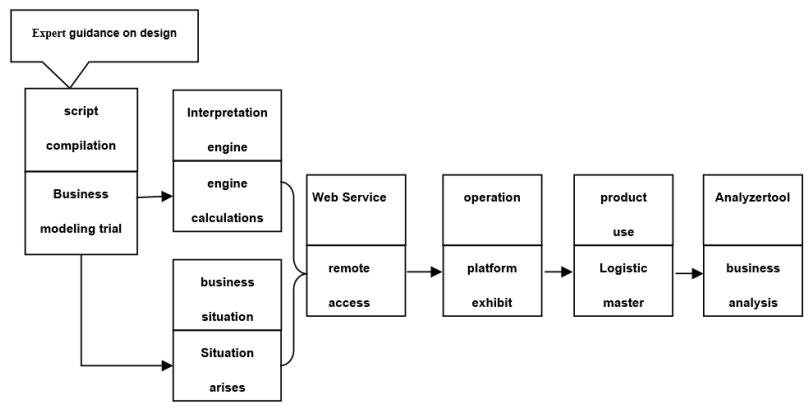Advancing Supply Chain Operation and Management Education Through Simulation-Based Teaching Systems
Main Article Content
Abstract
For many students studying supply chain management, managing a well-established supply chain is the direction of their efforts. However, the current supply chain education pays more attention to the cultivation of professional skills and lacks training in overall planning. In view of this, this study developed the "Supply Chain Operation Management Simulation Software", which takes supply chain management as the background, presents marketing strategies, manpower planning, price setting, inventory management, promotional activities, and other business management concepts using network software, and cooperates with learning plans to carry out case simulation lesson plans, so as to make classroom learning more lively through games to improve the lack of traditional static teaching and combine theory and practice, so that students can "learn by doing" Under the training, the business management skills of supply chain management are repeatedly practiced, so that students can experience the fun and hardships of supply chain management, and then evaluate whether they have the characteristics and abilities of entrepreneurship.
Article Details

This work is licensed under a Creative Commons Attribution-NonCommercial-NoDerivatives 4.0 International License.
Supply Chain and Sustainability Research uses a Gold Open Access model. All articles at Supply Chain and Sustainability Research are published Open Access. Publication is funded by a fee paid at the time of acceptance (Publication Fee). From June 2020 onward, author(s) retain copyright of their work, with articles licensed to the publisher Southeast Bangkok College and Supply Chain and Sustainability Research. All articles published on this site use the Creative Commons Attribution 4.0 License (CC BY 4.0). You do not need to seek permission from Supply Chain and Sustainability Research or Southeast Bangkok College for reuse of contents published on this site.
This means;
All articles are immediately available free-of-charge upon publication.
Copyright on all Open Access articles in Supply Chain and Sustainability Research is retained by the author(s), or the author's Employer.
Author(s) grant Southeast Bangkok College a license to publish the article and identify itself as the original publisher.
Author(s) also grant any third party the right to use the article freely as long as its integrity is maintained and the original authors, citation details and publisher are identified.
You are free to:
Share — copy and redistribute the material in any medium or format
Adapt — remix, transform, and build upon the material for any purpose, even commercially.
Under the following terms:
Attribution — You must give appropriate credit, provide a link to the license, and indicate if changes were made. You may do so in any reasonable manner, but not in any way that suggests the licensor endorses you or your use.
No additional restrictions — You may not apply legal terms or technological measures that legally restrict others from doing anything the license permits.
There may be exceptions to copyright and licensing for articles which were previously published under policies that are different from the above, in this case different licensing conditions may then apply. If in any case Supply Chain and Sustainability Research contains material republished with permission under a different license, you may need to seek permission for reuse from the copyright holder. In all such cases, however, access to these articles is free from fees or any other access restrictions.
Open Access ensures the widest possible access to research, makes research available to wider audiences, allows readers to use articles and data, and also allows author(s) to distribute their works freely. Open Access accelerates research by removing barriers to collaboration and accelerates scientific communication.
If you require more information, please don't be hesitated to contact the Editorial team anytime here or contact the Editorial Office below.
References
Cohen, K. J., & Rhenman, E. (1961). The role of management games in education and research. Management Science, 7, 131-166.
Crookall, D., Martin, A., Saunders, D., & Coote, A. (1986). Human and computer involvement in simulation. Simulation & Gaming, 17, 345-375.
Thavikulwat, P. (1990, March). Consumption as the objective in computer-scored total enterprise simulations. In Developments in Business Simulation and Experiential Learning: Proceedings of the Annual ABSEL conference (Vol. 17).
Graham, R. C., & Gray, C. F. (1969). Business games handbook. New York: American Management Association.
Hu, Y., Chen, M., & Saad, W. (2020). Joint access and backhaul resource management in satellite-drone networks:
A competitive market approach. IEEE Transactions on Wireless Communications, 19(6), 3908-3923.
Keys, J. B. (1987). Total enterprise business games. Simulation & Games, 18, 225-241.
Porter, M. E. (2011). Competitive advantage of nations: creating and sustaining superior performance. simon and Schuster.
Osterwalder, A., Pigneur, Y., Oliveira, M. A. Y., & Ferreira, J. J. P. (2011). Business Model Generation: A handbook for visionaries, game changers and challengers. African journal of business management, 5(7), 22-30.
Raia, A. P. (1966). A study of the educational value of management games. Journal of Business, 39, 339-352.
Rebstein, P. J., Weeks, G., & Spiegelman, G. B. (1993). Altered morphology of vegetative amoebae induced by increased expression of the Dictyostelium discoideum ras‐related gene rap1. Developmental genetics, 14(5), 347-355.
Thavikulwat, P. (1989). Modeling market demand in a demand-independent business simulation. Simulation & Games, 20, 439-458. (1990, March). Consumption as the objective in computer-scored total enterprise simulations. In Developments in Business Simulation and Experiential Learning: Proceedings of the Annual ABSEL conference (Vol. 17).
Van, D. N. (2003). The E-Learning Fieldbook: Implementation Lessons and Case Studies from Companies that are Making
E-Learning Work. McGraw-Hill.
Ward, D. (2005). An overview of strategy development models and the Ward-Rivani model. Economics Working Papers, 6, 1-24.
Wolfe, J. (1978). The effects of game complexity on the acquisition of business policy knowledge. Decision Sciences, 9,
-155.


